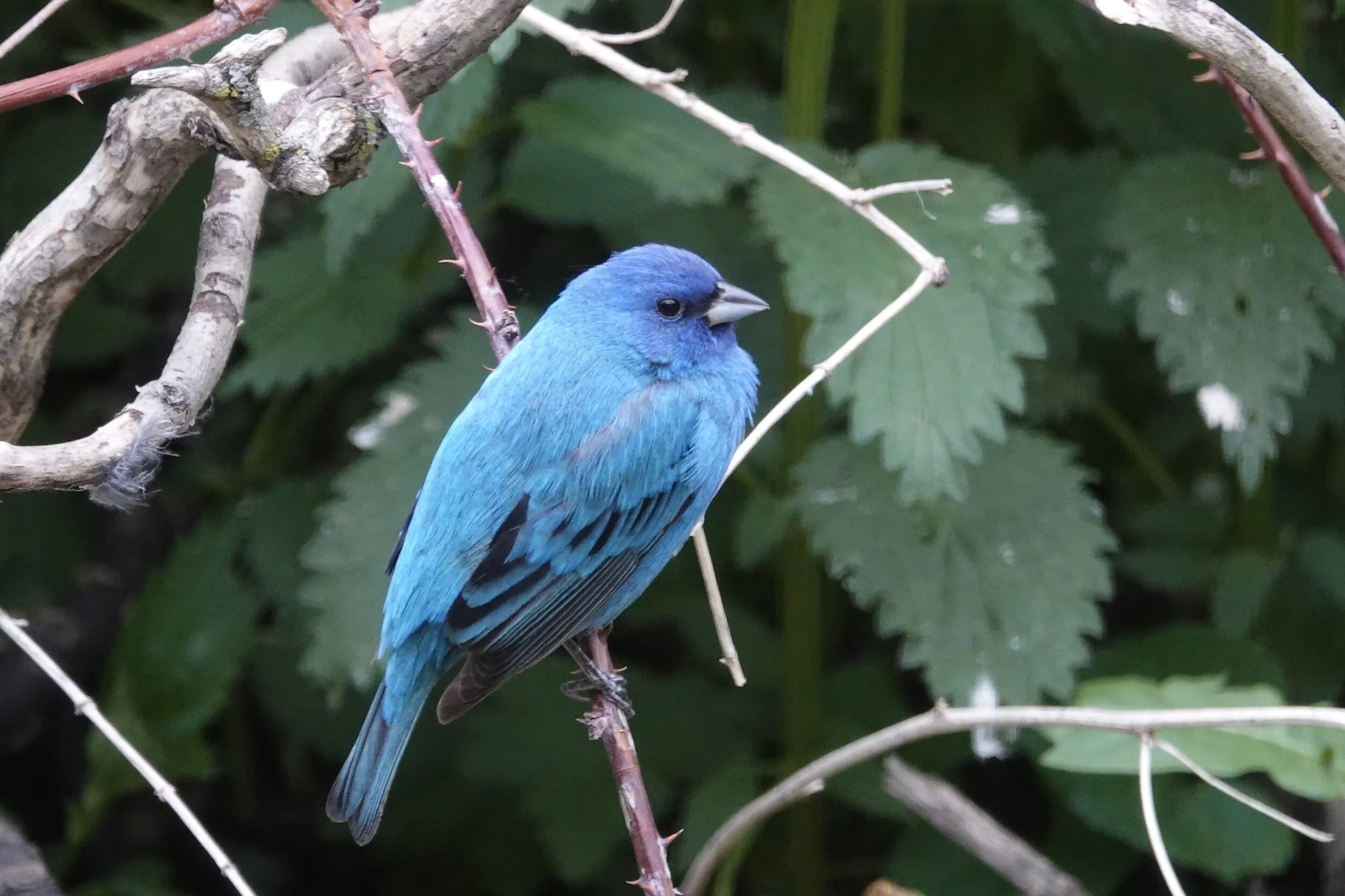Naturally
The other side of the door sparked my curiosity. There lurked a chickadee and my lawn that thrives on benign neglect. I’m always thrilled to see a chickadee.
I heard it calling “beans.” I watched a common nighthawk slice the sky above a ballpark in New Ulm and realized the bird had become an essential part of that baseball game.
A bird bander married them
My son coached a girls’ softball team. The players complained about being attacked by a bird as they warmed up before a game. It was a killdeer that first feigned injury, and when that didn’t dismiss the intruders, it fluttered at them to protect her nest. No harm was done to girl or bird.
Keith Radel of Faribault told me this about Forest Strnad of Faribault, a late friend of ours who was a Methodist pastor and a bird bander. The bird Forest banded the most was a dark-eyed junco—over 10,000 banded. He banded 700 of Keith’s bluebirds with two birds returning. A tree swallow, banded in one of Keith’s nest boxes, returned seven years later to the same box in which it had hatched. Forest presided at Keith’s wedding on a Friday the 13th, which was good luck.
A money-grubbing crow
I’ve been involved with the American Bald Eagle Foundation (ABEF) in Haines, Alaska, for many years. The ABEF secured a trickster crow that plucked a dollar bill from a willing visitor’s fingers. Sadly, the crow developed seizures and never made it to Alaska. A raven will be trained to perform that dodge.
Soaked, bouncing and concerned
Double-crested cormorants perch in the sun with wings spread to dry. They have less preen oil than other birds and their feathers become soaked rather than shedding water like a duck’s. That might aid hunting underwater.
The wood duck is the only North American duck that regularly produces two broods in one season. This is more common in southern latitudes due to the longer breeding season. The short interval between broods indicates a female’s first one likely failed. The ducklings hatch with the ability to bounce.
The U.S. Fish and Wildlife Service has updated its list of Birds of Conservation Concern, a report mandated by the Fish and Wildlife Conservation Act of 1988. The new report identifies 269 bird species, subspecies, or populations that represent high conservation priorities for FWS and deserve proactive attention. A few of the newly listed Birds of Conservation Concern that caught my attention are: yellow-billed cuckoo, chimney swift, lesser yellowlegs, belted kingfisher, bobolink, scarlet tanager and rose-breasted grosbeak.
Q&A
“Do ticks fall from trees?” It’s a myth like bug zappers are effective against mosquitoes, deer whistles rid the roads of deer, electronic devices repel mice, and hedge apples (Osage orange fruit) or horse chestnuts discourage spiders. Ticks do climb while trying to find food (blood), but only to the height of the animal. They look close to the ground (grass) for mice and other rodents, and in bushes or tall grasses for larger mammals such as humans and deer.
“When do turtles lay their eggs?” Most of Minnesota's turtle species lay eggs in late May through June. Raccoons and skunks destroy nests by digging up the eggs. A turtle nest cage can be built to help protect them.
https://wiatri.net/Inventory/WiTurtles/Volunteer/Images/ProtectingTurtleNests.pdf
“Are those the same robins in my yard as last year?” There is about a 50% chance one of last year’s nesting pair has returned, but only 25% of fledged robins survive until November.
“I didn’t see many cardinals in Minnesota when I was a child. Was I looking in the wrong places?” Cardinals have expanded their range north into Canada taking advantage of moderate temperatures, human habitation and bird feeders. The growth of towns and suburbs across America has helped the cardinal expand its range. There is speculation the southern birds followed the railroad tracks north.
“What should I do if I find an injured bird?” Try to make the animal as comfortable as possible and call the Wildlife Rehabilitation Center of Minnesota at 651-486-9453. If you find an injured raptor, contact the University of Minnesota Raptor Center at 612-624-4745.
“What birds have more than one brood a year?” Here are some that commonly do: mourning dove, cardinal, robin, house sparrow, eastern bluebird, house wren, eastern phoebe and barn swallow.
“Do deer eat milkweed?” People have told me they have had rabbits and deer eating their milkweed, but it’s unlikely to be their favorite food. I watched a rabbit eat a leaf.
Thanks for stopping by
“In nature, one never really sees a thing for the first time until one has seen it for the fiftieth.”—Joseph Wood Krutch
“Destroying rainforests for economic gain is like burning a Renaissance painting to cook a meal.”—E.O. Wilson
Do good.
©Al Batt 2021
My father called the Indigo Bunting a blue canary. Photo by Al Batt

